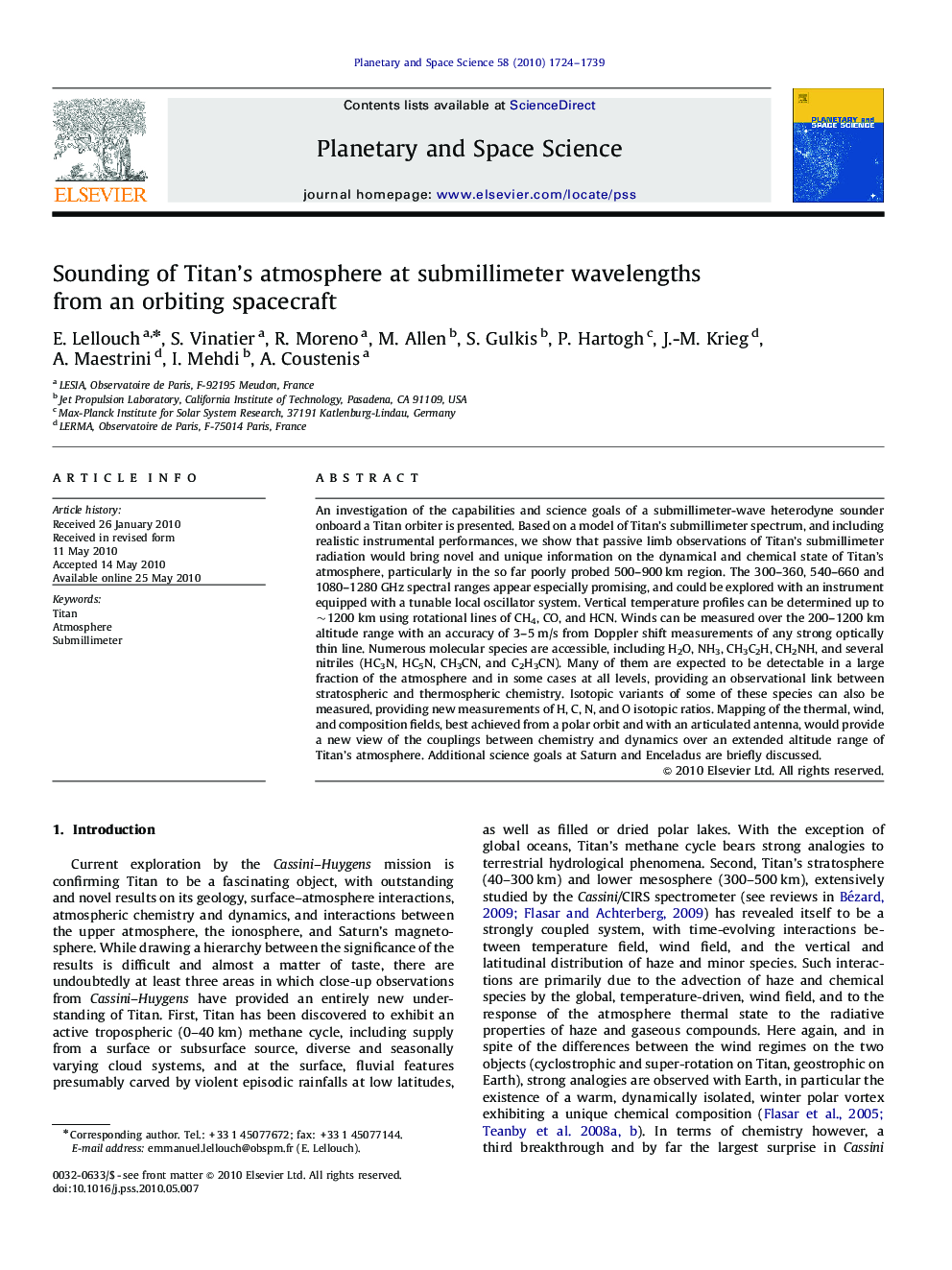| Article ID | Journal | Published Year | Pages | File Type |
|---|---|---|---|---|
| 1781695 | Planetary and Space Science | 2010 | 16 Pages |
An investigation of the capabilities and science goals of a submillimeter-wave heterodyne sounder onboard a Titan orbiter is presented. Based on a model of Titan’s submillimeter spectrum, and including realistic instrumental performances, we show that passive limb observations of Titan’s submillimeter radiation would bring novel and unique information on the dynamical and chemical state of Titan’s atmosphere, particularly in the so far poorly probed 500–900 km region. The 300–360, 540–660 and 1080–1280 GHz spectral ranges appear especially promising, and could be explored with an instrument equipped with a tunable local oscillator system. Vertical temperature profiles can be determined up to ∼1200 km using rotational lines of CH4, CO, and HCN. Winds can be measured over the 200–1200 km altitude range with an accuracy of 3–5 m/s from Doppler shift measurements of any strong optically thin line. Numerous molecular species are accessible, including H2O, NH3, CH3C2H, CH2NH, and several nitriles (HC3N, HC5N, CH3CN, and C2H3CN). Many of them are expected to be detectable in a large fraction of the atmosphere and in some cases at all levels, providing an observational link between stratospheric and thermospheric chemistry. Isotopic variants of some of these species can also be measured, providing new measurements of H, C, N, and O isotopic ratios. Mapping of the thermal, wind, and composition fields, best achieved from a polar orbit and with an articulated antenna, would provide a new view of the couplings between chemistry and dynamics over an extended altitude range of Titan’s atmosphere. Additional science goals at Saturn and Enceladus are briefly discussed.
